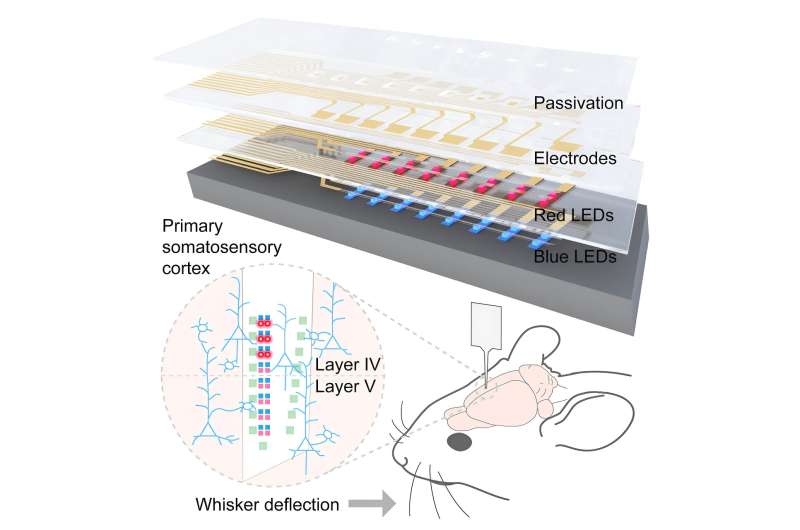Unlike previous, single probes, which often control brain activity in only one direction—excitation or inhibition, but not both—this new design can enhance and silence the electrical activities of the same neurons within specific cortical layers of the brain. It promises aid the investigation of tightly packed neural microcircuits within the cortex and deep brain regions and, in the longer term, add to the functional mapping of the brain.
Guangyu Xu, assistant associate professor of electrical and computer engineering, an appointee of the Dev and Linda Gupta Professorship at UMass Amherst, and principal investigator of the study hopes the device can ultimately help researchers identify the origin of brain diseases.
The device is based on optogenetics, a method to control neural activity using light, explains Xu. “We are able to send one of two colors of light (red or blue) to the brain to let neurons within each cortical layer become more active or more silent, as you can tell from electrical neural recording signals,” he says. “This capability, namely bidirectional optogenetic electrophysiology, will lend itself to high-resolution interrogation of the brain circuitry and shed light on animal disease models.”

